Explosions detected at Semisopochnoi volcano, Aviation Color Code raised to Orange, Alaska

Several small explosions were detected at Semisopochnoi volcano, Alaska on May 18, 2021, and a small ash cloud was observed in a satellite image acquired at 23:21 UTC on May 17. As a result, the Alaska Volcano Observatory (AVO) has raised the Aviation Color Code to Orange and the Alert Level to Watch.
Small ash clouds are likely being generated during explosions and are likely under 3 km (10 000 feet) a.s.l.
Weather clouds up to 4.5 km (15 000 feet) a.s.l. currently obscure the volcano, the observatory reported at 05:18 UTC today.
Small eruptions producing minor ash deposits within the vicinity of the active north crater of Mount Cerberus and ash clouds under 3 km (10 000 feet) above sea level are typical of recent activity at Semisopochnoi, AVO said.
Semisopochnoi is monitored by satellite data, regional infrasound, and lightning detection instruments. An infrasound array on Adak Island may detect explosive emissions from Semisopochnoi with a slight delay (approximately 13 minutes) if atmospheric conditions permit.
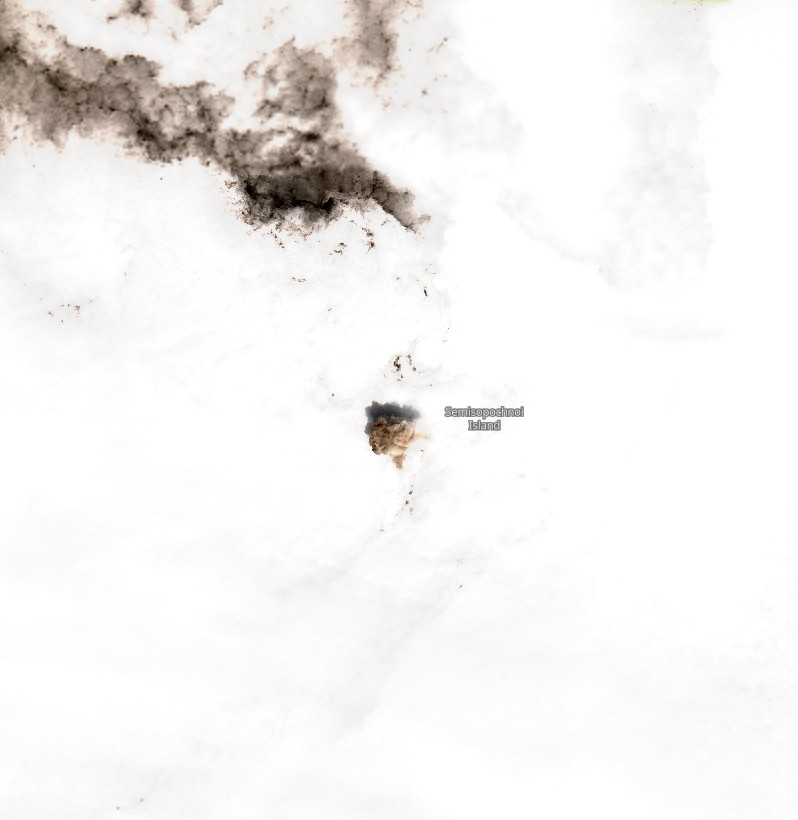
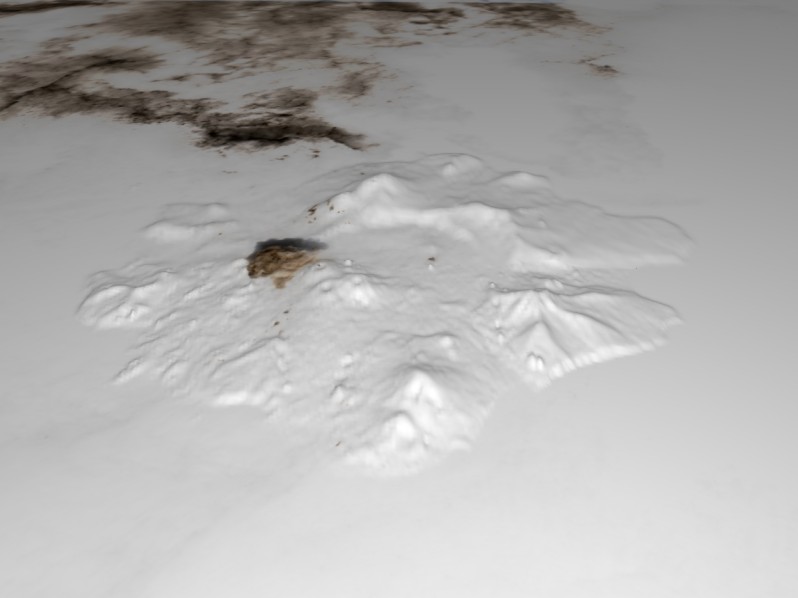
Semisopochnoi on May 17, 2021. Credit: Copernicus EU/Sentinel-2, TW
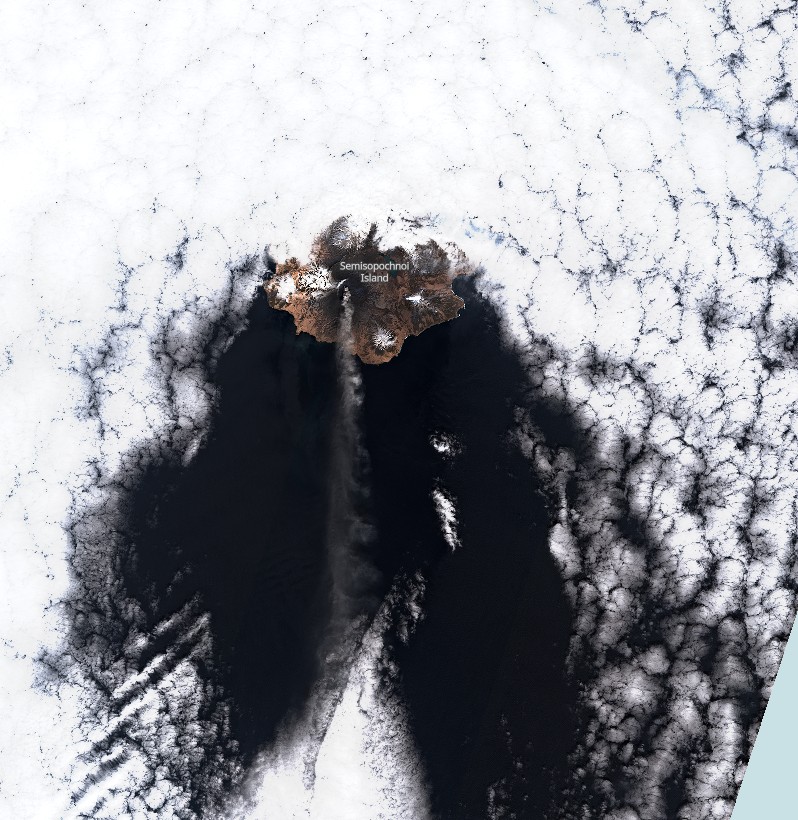
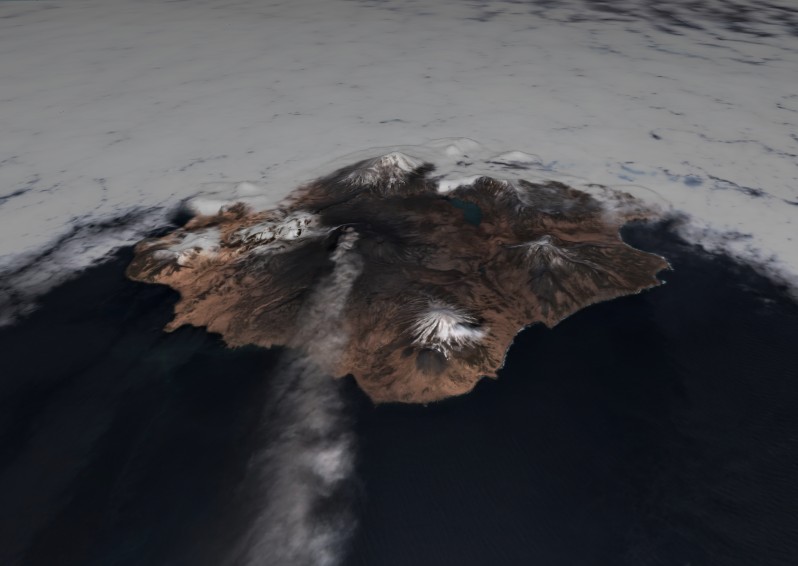
Semisopochnoi on April 22, 2021. Credit: Copernicus EU/Sentinel-2, TW
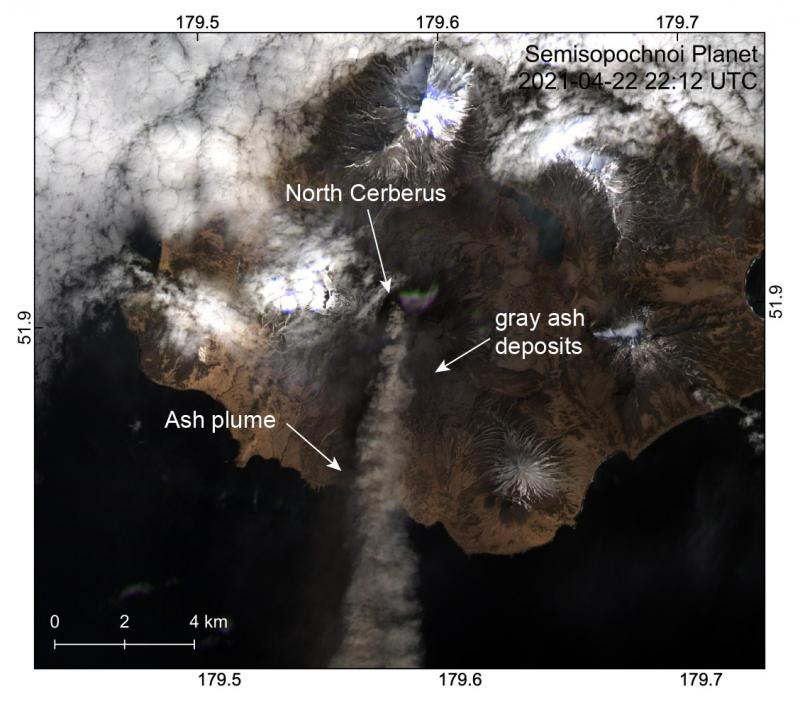
An ash plume extends from the north crater of Mount Cerberus to the south in a Planet image from April 22, 2021. Gray ash deposits are visible on the island, particularly on the south flank of Mount Cerberus, from frequent ash emissions. Credit: Hannah Dietterich, Planet imagery via UAF/GI
Geological summary
Semisopochnoi, the largest subaerial volcano of the western Aleutians, is 20 km (12.4 miles) wide at sea level and contains an 8 km (5 miles) wide caldera. It formed as a result of the collapse of a low-angle, dominantly basaltic volcano following the eruption of a large volume of dacitic pumice.
The high point of the island is 1 221 m high (4 005 feet) Anvil Peak, a double-peaked late-Pleistocene cone that forms much of the island's northern part.
The three-peaked 774 m (2 539 feet) high Mount Cerberus volcano was constructed during the Holocene within the caldera. Each of the peaks contains a summit crater; lava flows on the northern flank of Cerberus appear younger than those on the southern side.
Other post-caldera volcanoes include the symmetrical 855 m (2 903 feet) high Sugarloaf Peak SSE of the caldera and Lakeshore Cone, a small cinder cone at the edge of Fenner Lake in the NE part of the caldera.
Most documented historical eruptions have originated from Cerberus, although Coats (1950) considered that both Sugarloaf and Lakeshore Cone within the caldera could have been active during historical time.
This volcano is located within the Aleutian Islands, a UNESCO Biosphere Reserve property.
Featured image: Semisopochnoi on May 17, 2021. Credit: Copernicus EU/Sentinel-2, TW

Commenting rules and guidelines
We value the thoughts and opinions of our readers and welcome healthy discussions on our website. In order to maintain a respectful and positive community, we ask that all commenters follow these rules.